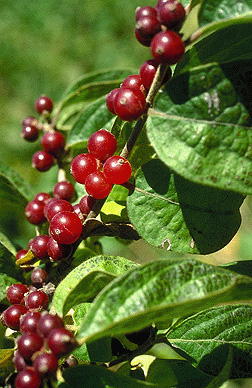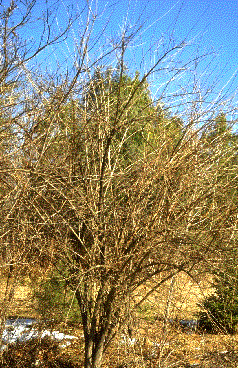Leaf: Opposite, simple, ovate to oval, 1 to 2 inches long, entire margin, sometimes lobed, semi-evergreen, light green and somewhat pubescent.
Flower: Fragrant, 1/2 to 1 inch long, white or yellowish-white long petals, appearing in late spring.
Fruit: Small (1/4 inch diameter), black berry, often in pairs, ripen in fall and persist into early winter.
Twig: Slender, initially pubescent, light brown in color developing scaly, thin bark, hollow pith; buds small.
Bark: Long, shreddy peeling strips, light red-brown to straw-colored.
Form: A scrambling, twisting vine with no tendrils or aerial roots, forms dense thickets in bushes and trees and sprawls along the ground.
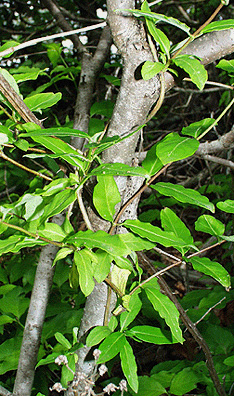


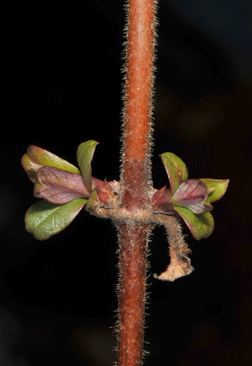
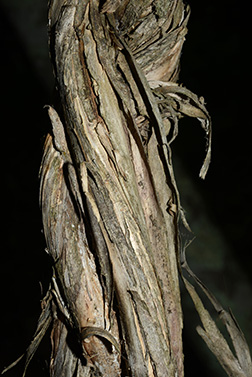


Notes:


